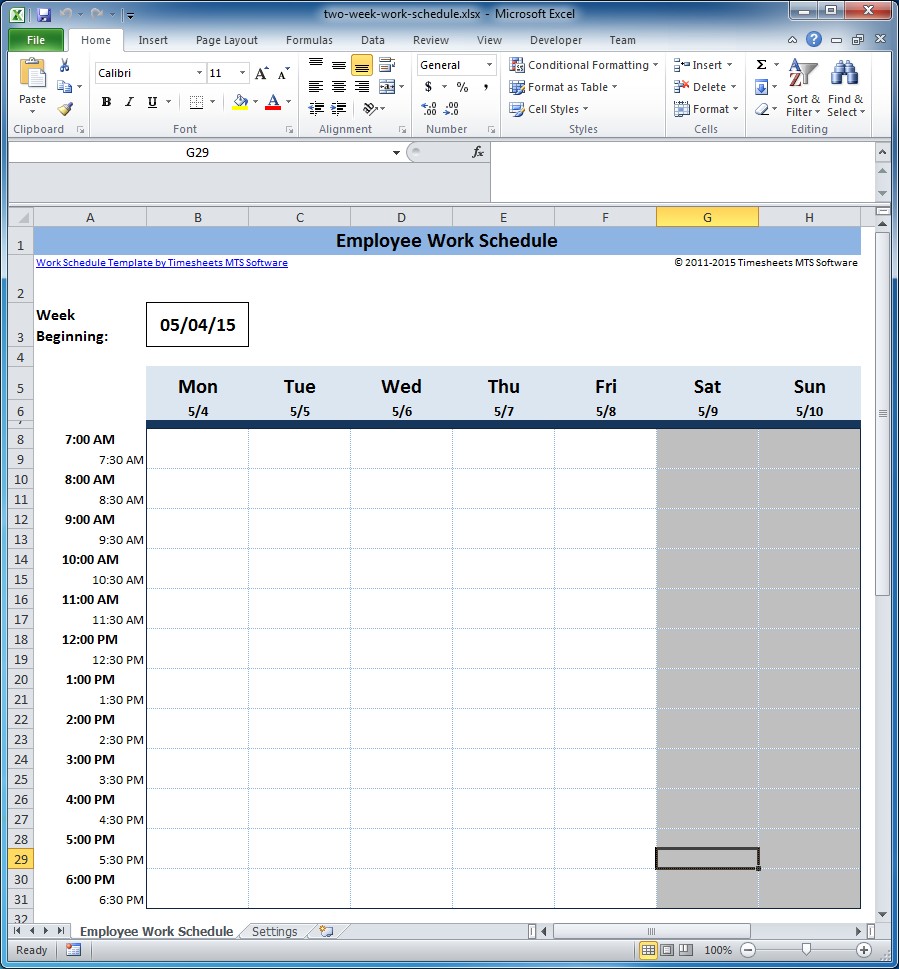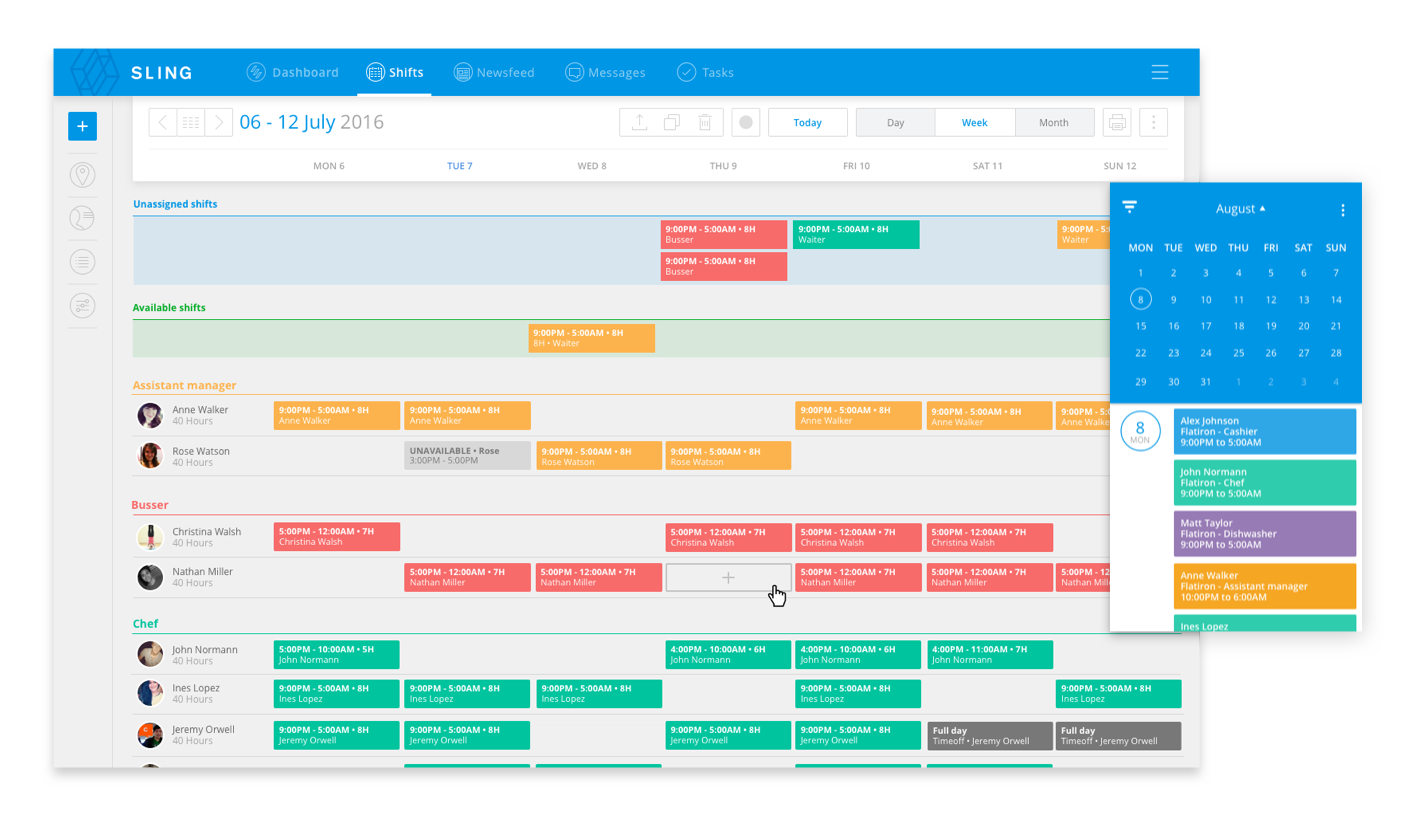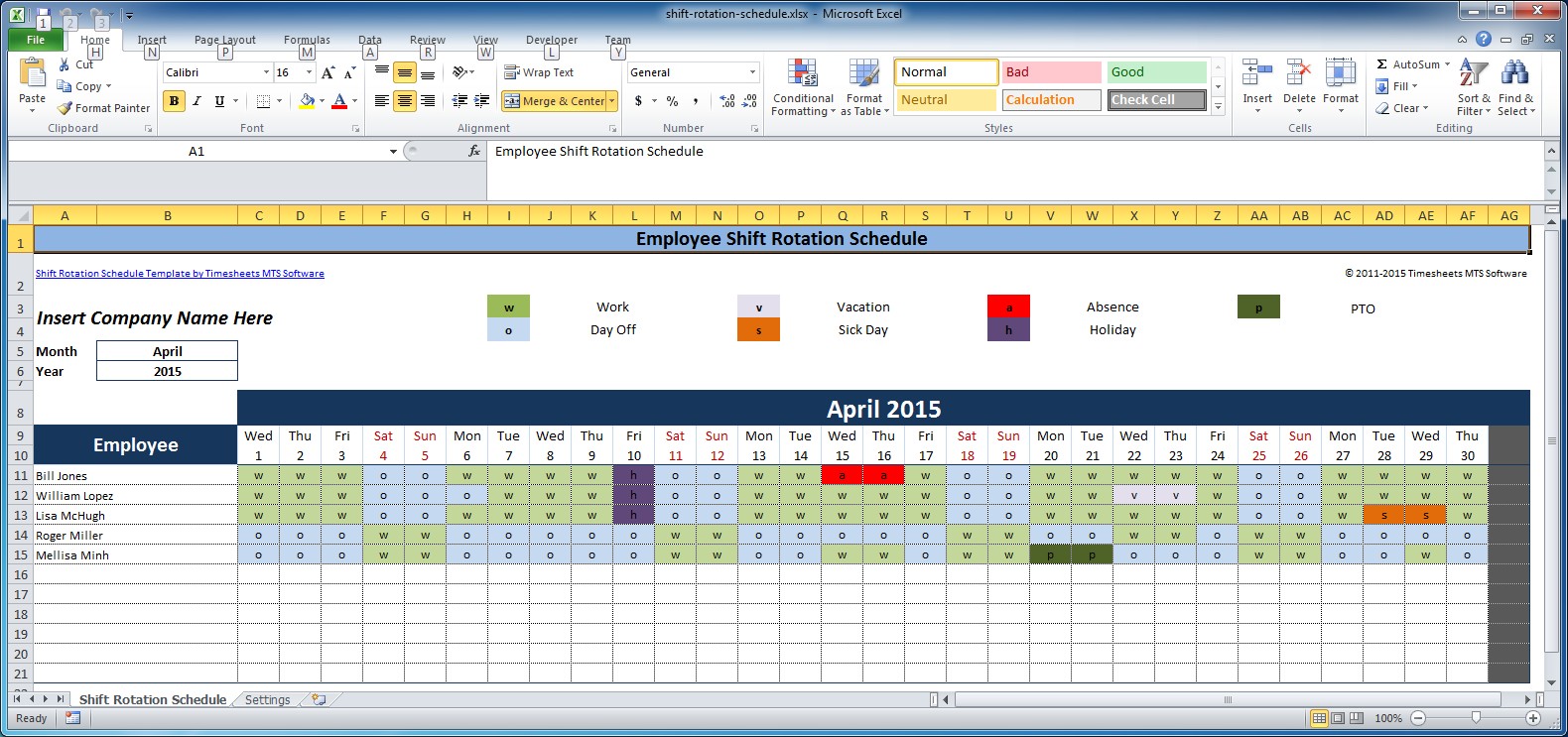

But regardless of the progress that has been made from pen and paper, to Excel and to online spreadsheets that live in the cloud, there’s still a lot left to be desired.

Managers could now make changes that their employees could follow in real time and check via their mobile phones at any time. The next innovation that came was Google Sheets. For example, if you made a mistake in your spreadsheet, you would have to change it and then resend the work schedule all over again. Of course, this wasn’t the most convenient method either. They then send the templates out to employees so that they can see when they are working. Many businesses these days use Excel templates to create work schedules for their teams. But it wasn’t until the Internet arrived that it was easier to distribute the schedules and communicate with your staff. You had a nice place to start - a gridded sheet that was a lot easier to alter than before. Microsoft Excel was, of course, the most popular one for people to use. What if an employee cancelled on your last minute? What if you made a mistake and double-booked a shift? How are you going to fix it? It certainly wasn’t an easy task.Īs personal computers began to be more readily available and people started using them more, many managers and schedulers started taking their schedules from notebooks to spreadsheets. You can imagine then how hard it used to be when the only way to communicate with your employees was either in person or by telephone.

Employees tend to be part-time workers - like students who need to balance their workloads with their school work. These types of industries deal mostly with hourly workers who have constantly changing schedules. If you’re running a healthcare facility, restaurant or retail store, for example, you have a lot of work ahead of you. Sure, it’s not really a problem when you are dealing with a team that has fixed 9-5 hours that don’t change all that often.īut if you are working with hourly employees, then the job gets infinitely harder. Remember life before the Internet? Managers had to create work schedules using pen and paper mostly, and then relay the schedules to employees individually - usually by phone. Employees really appreciate it when they can have their say in the scheduling process. You’re not going to be able to accommodate everyone’s needs and preferences all of the time, but asking them about their preferences ahead of time helps to build trust and gives your employees a feeling of being included in the process. But if you have this information ahead of time, there’s definitely going to be less headaches for you in the long run. Of course, there are always going to be changes that you are going to have to make and you’ll hardly ever be able to create a perfect schedule with your first draft. It’s basically going to allow you to make a schedule with less stress. Do they prefer weekends or weekdays? Days or nights? If you have this information available to you ahead of time, you are going to be able to enter the process anticipating potential scheduling problems and conflicts. See if you have any employees with certain preferences. This is especially true when scheduling restaurant, call center, retail or healthcare workers for example - employees who have constantly changing and irregular work schedules. Before you start creating your schedule in Excel, you need to survey your staff and see if they have any work preferences that can help you to make the process more convenient and less stressful.


 0 kommentar(er)
0 kommentar(er)
